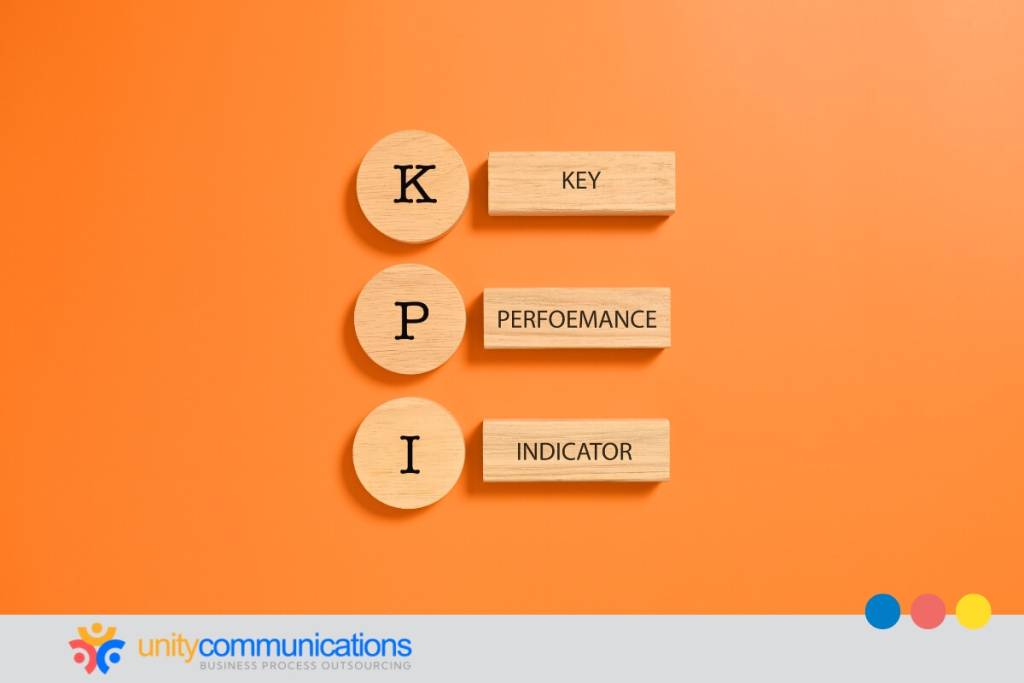Table of Contents
Recruitment process outsourcing (RPO) works best when backed by solid evidence. Clear key performance indicators (KPIs) can reveal whether the partnership improves hiring quality, efficiency, and business growth.
This article highlights the most critical KPI benchmarks for evaluating recruitment performance in RPO programs. These metrics gauge how well the hiring process meets business goals, supports efficiency, and drives long-term talent success.
Learn more about this business process outsourcing (BPO) model below!
9 essential KPI benchmarks to track in RPO programs

To understand the value of KPI benchmarks in RPO, it helps to understand BPO. This strategy involves delegating non-core tasks to external service providers to improve efficiency and reduce costs. RPO is a specialized BPO focused entirely on recruitment and talent acquisition.
Because RPO providers handle a critical business function, tracking their performance is essential. These benchmarks determine whether recruitment efforts align with business objectives.
A strong metrics-based performance framework gives you valuable insights into the recruitment process. It reveals gaps, tracks recruiter impact, and shows how hiring drives business results.
Rather than relying on gut feel or isolated feedback, KPI benchmarks let you:
- Compare results across hiring regions and business units to identify trends.
- Detect weak points across stages of the recruitment process.
- Track recruiter productivity within your applicant tracking system.
- Strengthen employer branding through measurable candidate experiences.
- Enhance recruiter accountability, manage recruiters effectively, and drive performance.
- Align recruitment output with headcount forecasts to support workforce planning.
From customer satisfaction to speed, these metrics guide improvements. But which KPI benchmarks in RPO programs should you track? Here are nine:
1. Time-to-fill to determine RPO’s impact on operations
Prolonged vacancies put pressure on the internal team, increasing the risk of disengagement and poor morale. They also stall productivity and delay decisions.
Time-to-fill measures the speed of the hiring process, from job intake to offer acceptance. This metric helps you adapt quickly to hiring needs and maintain team performance. It also helps:
- Reduce delays across functions.
- Support proactive workforce planning.
- Lower candidate dropout risk.
- Help enhance employee retention rate.
Time-to-fill reflects how recruitment drives business momentum. For example, filling a sales role in 20 days instead of 45 means hitting revenue targets faster and reducing lost opportunities. When optimized, it becomes a competitive advantage. It lets you secure top talent faster than rivals and minimize downtime.
2. Cost per hire to measure efficiency
The cost per hire reveals whether your recruitment spending delivers value. It covers sourcing tools, recruiter time, and tech costs to track efficiency and boost return on investment (ROI). This metric works best with quality of hire to gauge impact beyond initial savings.
RPO can significantly reduce costs. One industry report noted that companies saved over 50% in their first year by eliminating overhead and streamlining recruitment processes. They can also expect:
- Fewer agency fees
- Leaner recruiter headcount
- Optimized sourcing tools
The cost per hire directly ties the budget to hiring performance, showing whether your investment delivers efficient, high-impact outcomes.
3. Quality of hire to know recruitment yields
In 2023, 42% of leavers said their company could have kept them, highlighting how early retention reflects hiring quality and management support to reduce turnover.
Quality of hire and early retention show if recruitment delivers engaged, long-term fits. It specifically tracks:
- How well hires meet role expectations
- Their productivity beyond onboarding and initial ramp-up
- Early retention rates signaling cultural fit or role clarity gaps
Monitoring these key factors helps you adjust recruitment or onboarding efforts to reduce turnover and boost team stability. It identifies early warning signs and addresses mismatches.
4. Interview ratios to gauge hiring alignment
You want recruiters who filter effectively, send qualified candidates, and maintain hiring momentum. Submittal-to-interview and interview-to-offer ratios gauge recruiter accuracy and hiring manager alignment.
Poor ratios suggest a mismatch of candidates, unclear expectations, or gaps in the screening process:
- Numerous submittals per interview might indicate weak sourcing.
- Low interview-to-offer ratios might reflect poor candidate readiness.
You can use the insights to tighten handoffs and understand role requirements. They help target talent, refine screening, and speed up hiring without sacrificing fit.
5. Offer acceptance rate and candidate engagement to track RPO influence
Two underrated KPI benchmarks in RPO programs include offer acceptance and candidate engagement rates.
Offer acceptance rate shows if candidates are genuinely interested. A high rate means the role, pay, and employer brand align with their expectations. A low number suggests a late-stage drop-off. Candidate engagement reflects how well your recruiters communicate and maintain interest.
They also provide insights into recruiter consistency and relationship-building, spotting red flags such as:
- Offers declined without a counter
- Slow candidate response times
- Drop-off after final interviews
- Repeated hesitation before accepting
These KPIs measure how effectively you attract and engage candidates. They also reflect the recruiter’s ability to build trust and deliver on your value proposition.
6. Hiring manager satisfaction scores to assess long-term fit
A survey found that employees who make internal moves might stay 75% longer. It shows talent decisions drive retention and reveal RPO alignment with your culture.
This makes hiring manager satisfaction score another valuable KPI benchmark in RPO programs. It shows how well your RPO partner meets expectations and works with your team.
Tracking this metric helps you identify service gaps early, fine-tune candidate quality, and strengthen cross-functional collaboration. Key areas to assess include:
- Responsiveness to hiring needs
- Clarity of candidate profiles
- Alignment with business priorities
- Support during onboarding
- Openness to feedback
By listening to internal stakeholders and acting on their feedback, your RPO program can drive lasting talent success and improve workforce stability.
7. Candidate experience ratings to know brand perception
Other essential KPI benchmarks in RPO programs include net promoter score (NPS) and customer satisfaction score (CSAT). These ratings indicate how candidates perceive your hiring process, affecting your employer brand.
Candidate feedback on their recruitment journey matters. A smooth, respectful experience encourages positive word of mouth and attracts top talent. Poor ratings reveal problems in:
- Clear communication
- Timely updates
- Fair treatment
- Ease of application
- Feedback responsiveness
Improving these metrics helps build trust and boosts candidate loyalty. It also strengthens your recruitment efforts and enhances brand reputation.
8. Service-level agreement (SLA) compliance metrics to foster accountability
Another valuable RPO metric is SLA compliance. It shows how well your partner meets timelines and quality standards under agreed terms.
Missed SLAs often indicate coordination gaps or bandwidth issues that slow down hiring. They often manifest as:
- Delayed candidate submissions
- Missed hiring deadlines
- Poor interview coordination
- Incomplete service delivery
High adherence emphasizes a disciplined and predictable recruitment engine. Suppose an RPO partner consistently fills customer service roles within 21 days. The company can maintain staffing levels during seasonal demand spikes, avoid overtime costs for existing staff, and deliver consistent service quality to customers.
SLAs play a massive role in effective outsourcing. They hold vendors accountable and protect business continuity. They also reinforce trust, speed, and performance at scale.
9. Diversity hiring results to measure RPO impact beyond the pipeline
Strategic outsourcing succeeds when inclusion is measurable and transparent. The diversity metric reveals how effectively your RPO partner supports those goals.
The external provider might be less inclusive or prone to discrimination when numbers indicate:
- A drop in diverse candidates after final interviews
- A lack of diverse finalists for key roles
- Screening or shortlisting practices that show bias
- Repeated selection of similar candidate profiles despite diverse pipelines
- Limited outreach to diverse talent pools during sourcing efforts
KPI benchmarks should reflect volume and placement diversity, not just pipeline goals. When tracked consistently, diversity metrics show how inclusive hiring is and where to improve.
The bottom line

Do you want better results from your hiring strategy with measurable, data-driven insights? Tracking the right KPI benchmarks in RPO programs helps you assess recruiter performance, hiring quality, and business alignment in real time.
Let’s connect and discuss how to strengthen outcomes, boost accountability, and gain a recruitment partner that delivers proof.



